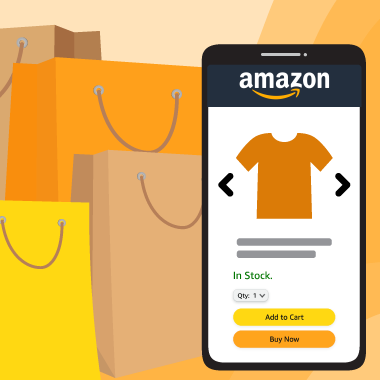
Recently, we discussed the rapidly rising influence of Walmart advertising.
Of course, that’s just one of several big changes across the current e-commerce landscape. Numerous other industry trends are impacting how, when and where people shop.
As the industry continues to accelerate, the sheer volume of retail media opportunities can become very overwhelming, very fast. However, getting ahead of the latest trends doesn’t have to be hard — or even take up all that much time.
The increasing prominence of online sales channels
As consumers do more online shopping than ever before, much of that activity is taking place on e-commerce marketplaces.
For example, an estimated 39% of surveyed consumers say they shop on Amazon more frequently now than they did prior to March of last year. Amazon Prime Day 2020 marked the marketplace’s two biggest days ever for small and medium businesses, with third-party sellers surpassing $3.5 billion in sales worldwide.
At Walmart, where an estimated 90% of Americans shop, the retail giant’s e-commerce business grew 69% in the fourth quarter of fiscal year 2021. And eBay closed out 2020 with 185 million active buyers, up 11 million from the end of 2019.
As these online channels become the preferred shopping destinations for droves of consumers, the opportunities for brands and retailers are far-reaching.
However, as demand grows, so does the competition.
There are now 1.6 million active sellers on Amazon, after 323,000 new sellers opened accounts in 2021. Walmart Marketplace also doubled in size following a surge of 50,000 new sellers, and the number of new advertisers has increased 40%.
Competing on these increasingly crowded marketplaces may sound like an impossible feat. But with the right strategies in place, it’s possible to perform exceedingly well.
For example, consider what happened at Razer. When demand for gaming equipment reached an all-time high, the brand responded by doubling the number of marketplaces where it sells. By approaching the process strategically and methodically, the company was able to generate 10x more marketplace GMV within a year. And they did it without having to take on a lot of extra work. In fact, members of the online team say efficiency went up 50%.
Razer’s story is not unique. Many brands and retailers have managed to increase revenue as much as 95% and even 422% — simply by honing in on the right digital marketing strategies.
So, how do they do it?
Streamlining retail media management
You could use different apps and solutions for different aspects of e-commerce and retail media. But this fragmented approach leaves gaps in integrations and can make online selling even more complex.
A better option is to streamline all activities within one central e-commerce platform. With just one solution to automate mission-critical tasks, it’s possible to connect the many different dots of e-commerce success.
Think of it this way: The battle for visibility on packed marketplaces like Amazon and Walmart hinges on a lot of moving parts: proper product categorization, SEO-friendly titles, optimized descriptions, competitive pricing and a lot more.
Even if you get all of these right, your product could still end up getting pushed deep into the search results. And when you do land the sale, that’s just the start. There are still fulfillment expectations to meet, stock quantities to update, customer reviews to monitor…and the list goes on.
The more you can streamline and automate, the better positioned you’ll be to make the most of each and every opportunity.
For example, rather than handling separate advertising campaigns in each individual marketplace or retail site, you can view them all holistically within one single platform. You could use automation capabilities for bid management, keyword harvesting and campaign scheduling. And not just on one marketplace, but across dozens or even hundreds of different channels simultaneously.
And you could do it all within the same central e-commerce platform used to update stock quantities, create competitive pricing strategies and connect to carriers.
Put simply, with a single platform to manage digital marketing alongside your other mission-critical tasks, it’s much easier to create connections with consumers — and to do it on numerous channels.
If you’re thinking of adopting new software, check out our E-Commerce Software Buyers Guide to see what the best e-commerce platforms have in common.






